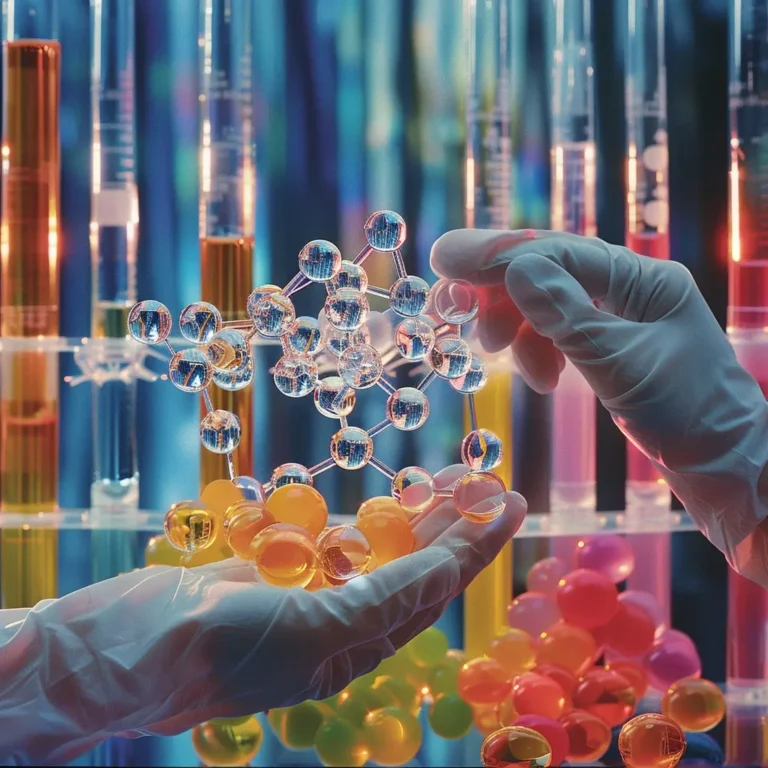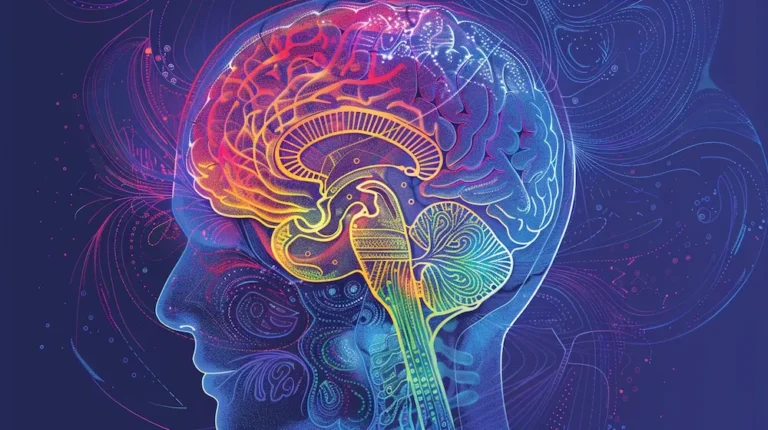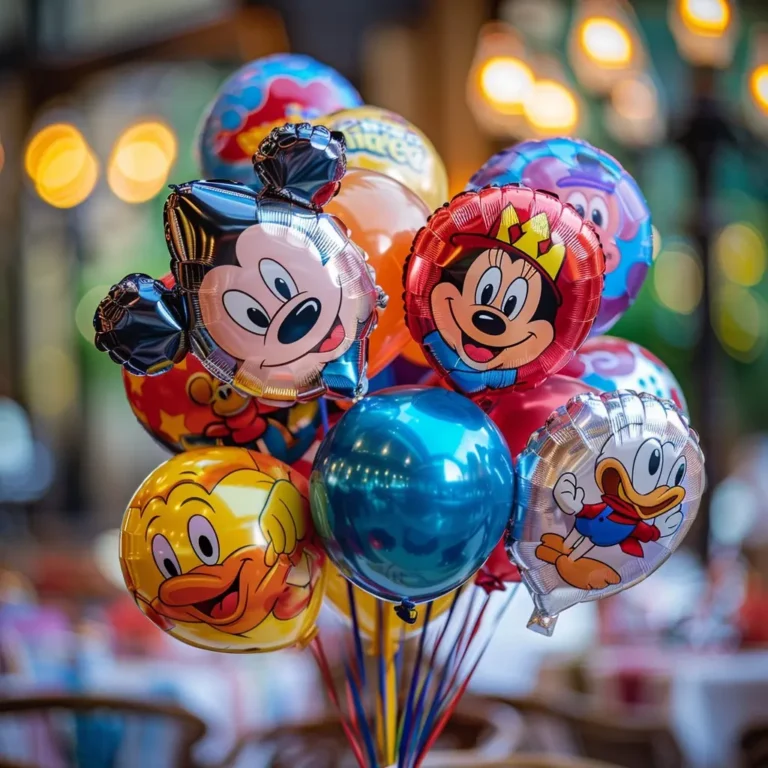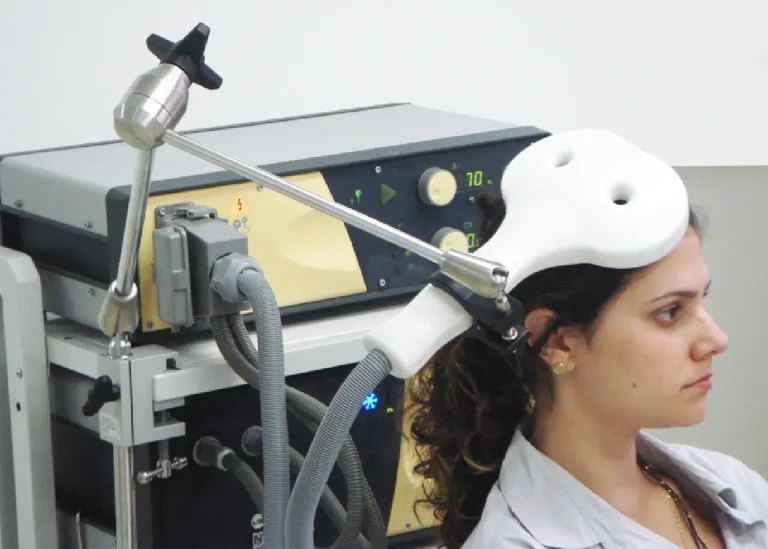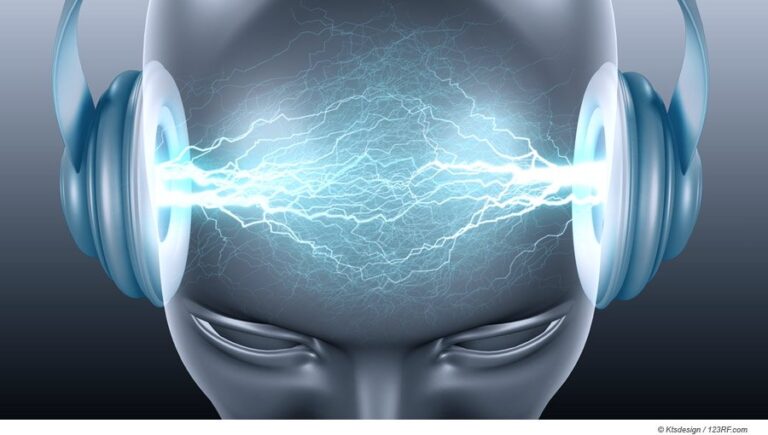Explore the intricate world of brain anatomy with these 70 carefully curated questions and answers. This collection covers various aspects of brain structure and function, providing valuable insights into the complex organ that controls so much of our body’s activities.
See also our Trivia game generator or Fun Facts game for even more fun!
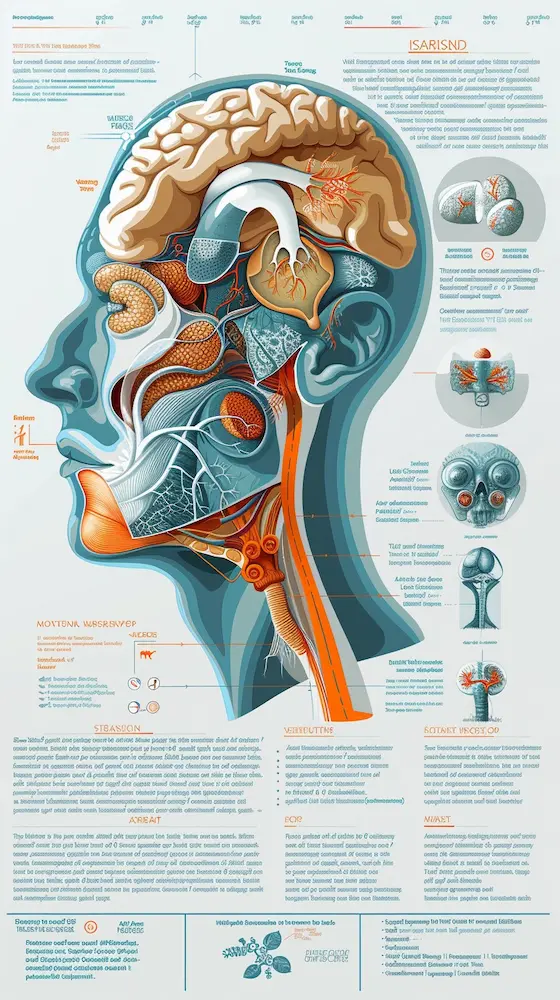
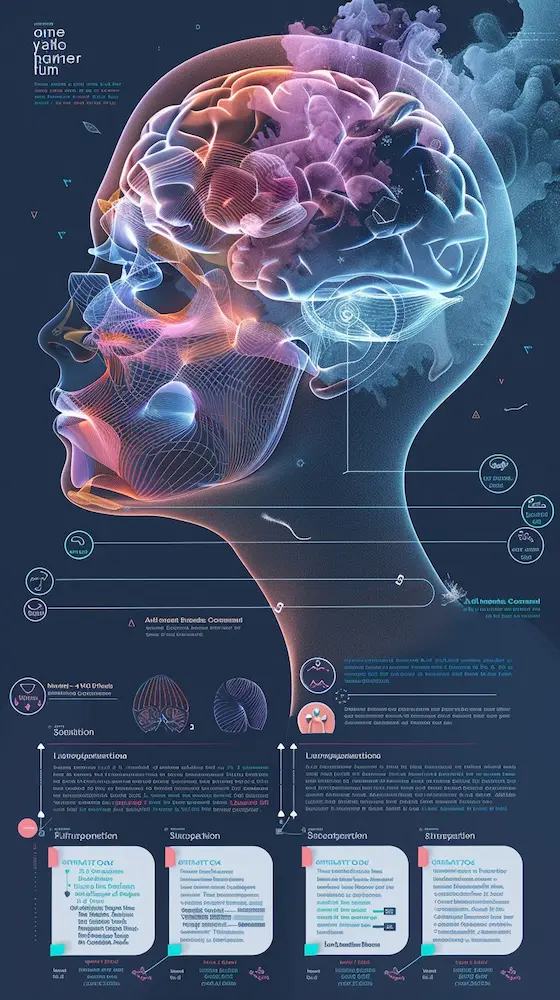
1. What is the primary function of the cerebral cortex?
Answer: Higher Cognitive Functions
The cerebral cortex is responsible for higher cognitive functions such as perception, reasoning, and decision-making. It is divided into different lobes, each associated with various functions.
2. What part of the brain controls voluntary movements?
Answer: Motor Cortex
The motor cortex, located in the frontal lobe, controls voluntary movements by sending signals to muscles throughout the body.
3. What role does the hippocampus play in the brain?
Answer: Memory Formation
The hippocampus is crucial for forming new memories and is involved in spatial navigation.
4. Which brain structure is responsible for regulating emotions?
Answer: Amygdala
The amygdala plays a key role in processing emotions, especially those related to fear and pleasure.
5. What is the function of the corpus callosum?
Answer: Connects the Two Hemispheres
The corpus callosum connects the left and right hemispheres of the brain, allowing for communication between them.
6. What does the thalamus do?
Answer: Relay Center for Sensory Information
The thalamus acts as a relay station for sensory information, directing it to the appropriate areas of the cerebral cortex.
7. How does the hypothalamus affect the body?
Answer: Regulates Homeostasis
The hypothalamus regulates homeostatic processes such as temperature, hunger, and thirst, and also influences the endocrine system.
8. What is the role of the cerebellum?
Answer: Coordination and Balance
The cerebellum is responsible for coordinating voluntary movements, maintaining balance, and fine-tuning motor skills.
9. What does the brainstem control?
Answer: Basic Life Functions
The brainstem controls essential life functions such as heart rate, breathing, and sleep-wake cycles.
10. What is the primary function of the occipital lobe?
Answer: Visual Processing
The occipital lobe is primarily responsible for processing visual information and interpreting visual stimuli.
11. How does the prefrontal cortex contribute to behavior?
Answer: Executive Functions
The prefrontal cortex is involved in executive functions such as planning, decision-making, and social behavior.
12. What is the role of the parietal lobe?
Answer: Sensory Processing and Spatial Awareness
The parietal lobe processes sensory information related to touch, temperature, and pain, and is involved in spatial awareness.
13. What does the insula do?
Answer: Interoception and Emotional Awareness
The insula is involved in interoception (perception of internal bodily states) and emotional awareness, helping to process internal sensations.
14. What is the significance of the basal ganglia?
Answer: Movement Regulation
The basal ganglia are involved in the regulation of voluntary motor movements and procedural learning.
15. How does the brain’s limbic system contribute to emotions?
Answer: Emotion Regulation and Memory
The limbic system, including the amygdala and hippocampus, plays a role in regulating emotions and forming memories.
16. What is the function of the pineal gland?
Answer: Regulates Sleep-Wake Cycles
The pineal gland produces melatonin, which helps regulate sleep-wake cycles and seasonal biological rhythms.
17. How does the brainstem contribute to motor control?
Answer: Basic Motor Functions and Reflexes
The brainstem controls basic motor functions such as posture and balance, and manages reflexes.
18. What is the role of the auditory cortex?
Answer: Processing Sound Information
The auditory cortex, located in the temporal lobe, processes sound information and is responsible for auditory perception.
19. What does the somatosensory cortex do?
Answer: Processes Sensory Information from the Body
The somatosensory cortex processes sensory information such as touch, temperature, and pain from various parts of the body.
20. What is the role of the ventral striatum?
Answer: Reward Processing
The ventral striatum is involved in reward processing and motivation, playing a role in the brain’s reward system.
21. How does the brain handle complex problem-solving?
Answer: Engagement of Multiple Cortical Areas
Complex problem-solving involves multiple cortical areas, including the prefrontal cortex for planning and the parietal cortex for spatial reasoning.
22. What does the arcuate fasciculus do?
Answer: Connects Language Areas
The arcuate fasciculus connects Broca’s area (speech production) and Wernicke’s area (language comprehension), facilitating communication between these regions.
23. How does the brain regulate body temperature?
Answer: Hypothalamic Control
The hypothalamus regulates body temperature by initiating physiological responses such as sweating or shivering to maintain homeostasis.
24. What is the function of the ventral medial prefrontal cortex?
Answer: Decision Making and Risk Assessment
The ventral medial prefrontal cortex is involved in evaluating risks and rewards, influencing decision making and social behavior.
25. How does the brain process pain?
Answer: Pain Pathways and Cortical Processing
Pain is processed through specific pathways involving the spinal cord and brainstem, with final processing in the somatosensory cortex for localization and perception.
26. What is the role of the retrosplenial cortex?
Answer: Navigation and Memory
The retrosplenial cortex is involved in spatial navigation and memory, helping to orient and recall spatial layouts and landmarks.
27. What does the optic nerve do?
Answer: Transmits Visual Information
The optic nerve carries visual information from the retina to the brain, essential for vision.
28. What is the role of the corpus callosum?
Answer: Connects the Two Hemispheres
The corpus callosum connects the left and right cerebral hemispheres, allowing for interhemispheric communication.
29. How does the brain’s limbic system contribute to behavior?
Answer: Emotion and Memory Regulation
The limbic system regulates emotions and memory, influencing behavior and motivation.
30. What is the role of the basal ganglia?
Answer: Movement Regulation and Procedural Learning
The basal ganglia regulate voluntary movements and are involved in procedural learning and routine behaviors.
31. What does the term “neuroplasticity” refer to?
Answer: Brain’s Ability to Adapt and Change
Neuroplasticity is the brain’s ability to reorganize itself by forming new neural connections throughout life.
32. What is the function of the olfactory bulb?
Answer: Sense of Smell
The olfactory bulb processes information about odors and sends it to the brain, contributing to the sense of smell.
33. What is the role of the thalamus in sensory processing?
Answer: Relay Center for Sensory Information
The thalamus relays sensory signals to the appropriate areas of the cerebral cortex for processing.
34. How does the hypothalamus influence behavior?
Answer: Regulates Homeostasis and Emotional Responses
The hypothalamus regulates homeostasis and emotional responses, influencing behavior and physiological processes.
35. What is the function of the pineal gland?
Answer: Regulates Sleep-Wake Cycles
The pineal gland produces melatonin, which helps regulate sleep-wake cycles and seasonal biological rhythms.
36. How does the brainstem contribute to motor control?
Answer: Controls Basic Motor Functions
The brainstem controls basic motor functions such as posture and balance, and manages reflexive movements.
37. What is the role of the prefrontal cortex?
Answer: Executive Functions and Decision Making
The prefrontal cortex is involved in executive functions such as decision making, planning, and social behavior.
38. How does the brain process auditory information?
Answer: Auditory Cortex in the Temporal Lobe
Auditory information is processed by the auditory cortex in the temporal lobe, allowing for sound perception and interpretation.
39. What is the role of the motor cortex?
Answer: Controls Voluntary Movements
The motor cortex, located in the frontal lobe, plans and executes voluntary movements by sending signals to muscles.
40. How does the somatosensory cortex function?
Answer: Processes Sensory Information from the Body
The somatosensory cortex processes sensory information such as touch and pain from different body parts, contributing to tactile perception.
41. What does the occipital lobe do?
Answer: Visual Processing
The occipital lobe is primarily responsible for processing visual stimuli and interpreting visual information.
42. How does the limbic system affect memory?
Answer: Memory Formation and Emotional Associations
The limbic system, including the hippocampus and amygdala, influences memory formation and the emotional significance of memories.
43. What is the function of the superior temporal gyrus?
Answer: Auditory Processing
The superior temporal gyrus is involved in processing auditory information, including speech and other complex sounds.
44. How does the brain handle complex problem-solving?
Answer: Multiple Cortical Areas Involvement
Complex problem-solving engages multiple cortical areas, including the prefrontal cortex for planning and the parietal cortex for spatial reasoning.
45. What is the role of the ventral striatum?
Answer: Reward Processing and Motivation
The ventral striatum is involved in processing rewards and motivating behavior, influencing the brain’s reward system.
46. How does the brain process taste?
Answer: Gustatory Cortex
Taste sensations are processed by the gustatory cortex, located in the insula and frontal operculum, contributing to flavor perception.
47. What does the arcuate fasciculus do?
Answer: Connects Language Areas
The arcuate fasciculus connects Broca’s area and Wernicke’s area, facilitating communication between regions involved in language.
48. How does the brain manage cognitive control?
Answer: Prefrontal Cortex Involvement
Cognitive control, including attention and working memory, is managed by the prefrontal cortex, which organizes thoughts and controls impulses.
49. What is the function of the claustrum?
Answer: Integration of Sensory Information
The claustrum is involved in integrating sensory information from various modalities and is thought to play a role in consciousness.
50. How does the brain process spatial information?
Answer: Parietal Cortex and Hippocampus
Spatial information is processed by the parietal cortex for spatial awareness and the hippocampus for memory of spatial layouts.
51. What does the medial prefrontal cortex do?
Answer: Decision Making and Social Behavior
The medial prefrontal cortex is involved in decision making, social reasoning, and understanding social interactions.
52. How does the brain process visual information?
Answer: Visual Cortex in the Occipital Lobe
Visual information is processed by the visual cortex in the occipital lobe, allowing for visual perception and interpretation.
53. What is the role of the ventral medial prefrontal cortex?
Answer: Decision Making and Risk Assessment
The ventral medial prefrontal cortex is involved in evaluating risks and rewards, influencing decision making and social behavior.
54. How does the brain handle emotional responses?
Answer: Amygdala and Prefrontal Cortex
Emotional responses are managed by the amygdala, which processes emotions, and the prefrontal cortex, which regulates emotional responses.
55. What is the function of the olfactory bulb?
Answer: Sense of Smell
The olfactory bulb processes olfactory information, contributing to the sense of smell and odor perception.
56. How does the brain regulate sleep-wake cycles?
Answer: Suprachiasmatic Nucleus
The suprachiasmatic nucleus in the hypothalamus regulates sleep-wake cycles by responding to light cues and coordinating biological rhythms.
57. What role does the cerebellum play in motor control?
Answer: Coordination and Precision
The cerebellum coordinates and fine-tunes motor movements, contributing to balance and precision in movements.
58. What is the function of the pineal gland?
Answer: Regulates Sleep-Wake Cycles
The pineal gland produces melatonin, influencing sleep-wake cycles and seasonal biological rhythms.
59. How does the brain manage sensory input?
Answer: Thalamic Relay and Cortical Processing
Sensory input is managed by the thalamus, which relays information to the appropriate cortical areas for processing.
60. What is the function of the lateral geniculate nucleus?
Answer: Visual Signal Processing
The lateral geniculate nucleus processes visual signals received from the retina and relays them to the primary visual cortex.
61. How does the brain process taste sensations?
Answer: Gustatory Cortex
Taste sensations are processed by the gustatory cortex in the insula and frontal operculum, responsible for interpreting taste signals.
62. What is the significance of the amygdala in emotional learning?
Answer: Association of Emotions with Experiences
The amygdala helps associate specific experiences with emotional responses, influencing memory formation based on emotional significance.
63. How does the brain manage cognitive control?
Answer: Prefrontal Cortex Involvement
Cognitive control is managed by the prefrontal cortex, which organizes thoughts, controls impulses, and maintains focus.
64. What is the function of the superior temporal gyrus?
Answer: Auditory Processing
The superior temporal gyrus processes auditory information, playing a role in understanding speech and complex sounds.
65. How does the brain regulate circadian rhythms?
Answer: Suprachiasmatic Nucleus
The suprachiasmatic nucleus regulates circadian rhythms by responding to light cues and coordinating sleep-wake cycles and other biological rhythms.
66. What is the role of the parahippocampal gyrus?
Answer: Memory Encoding and Retrieval
The parahippocampal gyrus helps with memory encoding and retrieval, processing spatial and contextual information.
67. How does the brain facilitate language production?
Answer: Broca’s Area and Motor Cortex
Language production is facilitated by Broca’s area for planning speech and the motor cortex for controlling the muscles involved in speaking.
68. What is the significance of the retrosplenial cortex?
Answer: Navigation and Memory
The retrosplenial cortex is involved in navigation and spatial memory, helping in orienting and recalling spatial layouts and landmarks.
69. How does the brain manage social interactions?
Answer: Prefrontal Cortex and Amygdala
Social interactions are managed by the prefrontal cortex for social reasoning and decision-making, and the amygdala for processing emotional responses.
70. What is the function of the claustrum?
Answer: Integration of Sensory Information
The claustrum integrates sensory information from different modalities and is thought to play a role in consciousness and sensory perception.
